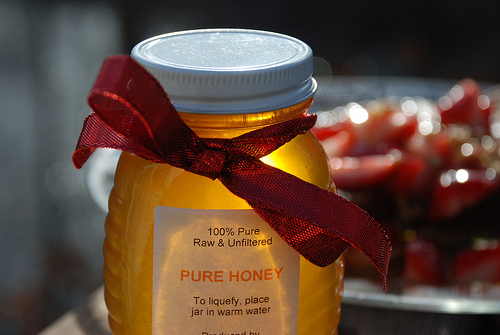That honey you're eating probably isn't

The situation with honey is getting quite dire. NPR recently covered a story about America's largest honey packers having admitted to deliberately "buying millions of dollars worth of honey that was falsely labeled."
Aside from being fraudulent and a violation of United States import laws, this problem is potentially toxic. Honey coming from China is, shall we say, a highly suspect product. Fraudulent Chinese honey is frequently bolstered with artificial flavorings, sweeteners like rice syrup, and may include significant levels of a wide variety of industrial contaminants.
If you ever use honey, you should do yourself a real favor and hunt down a source of raw local honey. Not only is it actually honey (and not a potentially toxic slurry of artificial sweeteners and corn syrup), it's also absolutely delicious. The difference between raw local honey and grocery store honey is shocking the first time you try it. It's equivalent to the difference between a fresh garden tomato and a grocery store tomato - the difference is that huge.
Food co-ops and other "hippie grocery stores" are one likely source. Some larger stores offer natural food aisles that will include a local raw honey supplier as well. Farmers' markets are a great place to find raw local honey, as well as directly supporting the local producers.
You may have to go a little out of your way to find a source of raw local honey. But the good news is that honey has a long shelf life, so feel free to buy quite a lot of it and store it for later use.
Many people claim that eating a tablespoon or two of raw local honey a day can help with pollen allergies. Personally I haven't found that to be the case, but there has been "very little formal research on the subject" so you never know. At the very least, it can't hurt (assuming you are an adult with an otherwise-healthy immune system), and it's certainly a delicious experiment!
Image courtesy Flickr/kthread

1 comments